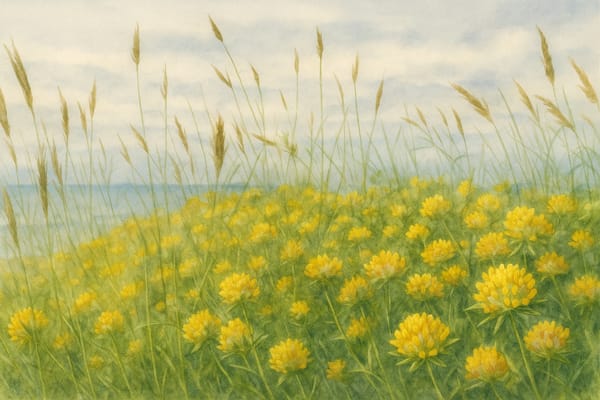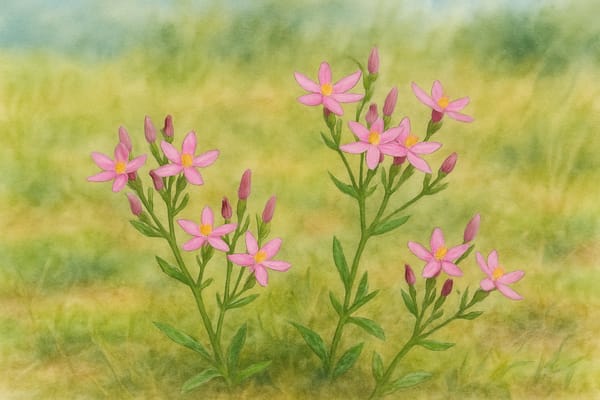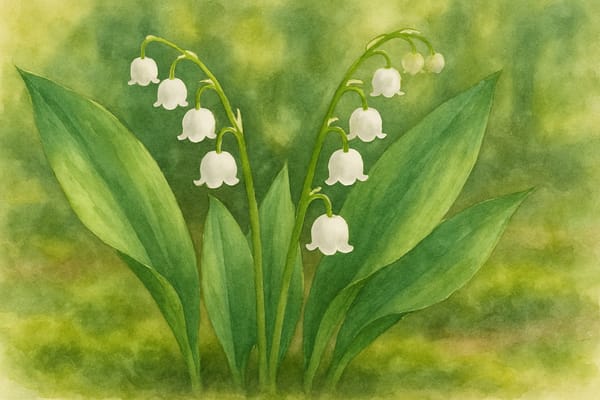Healer of Habitats and Guardian of the Small Blue
Historical and Cultural Significance
Kidney vetch—known in herbal lore as woundwort—has long been a plant of remedy, resilience, and quiet charm. Common across Cornwall’s cliffs and dunes, this sunny-flowered pioneer holds deep roots in both folklore and conservation.
Traditional Medicine & Folklore:
Named for its supposed benefit to the kidneys, this plant was favoured by medieval healers to soothe wounds and swellings. Its place in the “doctrine of signatures” linked its kidney-shaped flowers to its curative role—especially in Cornish and broader British folk medicine.
Folk Usage:
Although rarely consumed today, young leaves were sometimes eaten in times past. Its main reputation, however, rested on its healing associations and its gentle presence in the herbalist’s garden.
Ecological Value:
Most notably, kidney vetch is essential to the life cycle of the rare small blue butterfly, whose caterpillars rely on the plant exclusively. Its woolly yellow flowers also attract a wide range of pollinators, making it a small but mighty keystone species.
Cornish Identity & Conservation:
On the Lizard, at Bedruthan, and scattered through sand dunes and chalky slopes, kidney vetch is a hallmark of Cornwall’s wild and fragile coastal ecology. As habitat loss accelerates, its decline is a signal of shifting tides in biodiversity and land use.
Growing Kidney Vetch in Coastal Gardens
Low-maintenance, drought-tolerant, and full of wildflower charm—kidney vetch thrives in gardens that favour simplicity and naturalism.
| Requirement | Details |
|---|
| Light | Full sun (6–8 hrs/day) |
| Soil | Well-drained; sandy, gravelly, chalky; poor to moderately fertile soils |
| Water | Drought-tolerant once established |
| Salt Tolerance | High; thrives in coastal conditions |
| Hardiness | Hardy across the UK |
| pH | Neutral to slightly alkaline (6.0–7.5) |
Coastal Care Tips
- Ideal Setting:
Coastal gardens, wildflower meadows, erosion-prone slopes, gravel beds, or pollinator-focused borders. - Sowing Advice:
Sow in autumn or spring, on the soil surface or trays—needs light to germinate. Thinly spaced for airflow and coverage. - Minimal Inputs:
No need for fertilisers; rich soil may suppress flowering. Water only during early growth stages. - Ongoing Maintenance:
Deadhead to extend blooming. Trim lightly to keep it compact and neat. Once settled, it suppresses weeds with ease. - Pest Resistance:
Pest- and disease-resistant—though aphids or mites may appear occasionally.
Special Notes for Coastal Gardens
- Supports Rare Butterflies:
A critical host plant for the endangered small blue. Planting kidney vetch helps conserve one of the UK’s rarest butterflies. - Soil Saver:
Excellent for stabilising sandy soils and controlling erosion—ideal for coastal banks and exposed hillsides. - Conservation Through Gardening:
By growing kidney vetch, gardeners can actively support conservation goals while enjoying its sunny, soft floral charm.
Quick-Glance Table
| Step | Traditional Tip |
|---|
| Soil & Sun | Poor, dry, full sun, coastal exposure |
| Sowing | Autumn or spring; surface sow; thin lightly |
| Watering | Minimal once established |
| Feeding | Avoid fertilisers; too rich = fewer flowers |
| Wildlife Support | Hosts small blue butterfly; boosts bee and pollinator numbers |











